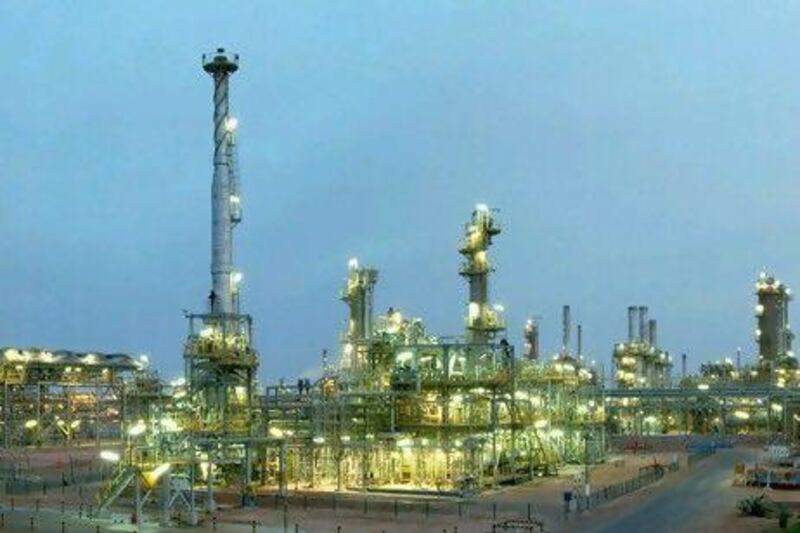The drive begins on the E11 heading west. From Abu Dhabi, it is 80km to the highway exit, 50km along the road that bypasses the oilfields on the way to Madinat Zayed and, finally, a 60km home stretch to Liwa.
By the time Mohammed Al Mazrouei steps out of his car, he is two hours from the capital.
This distant stretch of sand -marked until recently by little more than oil rigs and beach resthouses - is Al Gharbia, the underdeveloped, underpopulated land Mr Al Mazrouei navigates as director general of the Western Region Development Council.
The region is best known to tourists for its dates, camels and 500 metre sand dunes. Yet it is also the chosen site of Abu Dhabi's most ambitious industrial plans, from a solar array to the nation's first railway to the Arab world's maiden nuclear power plant. The budgets for the projects range from US$700 million (Dh2.57 billion) to $20bn.
Mr al Mazrouei hopes the major projects will help Al Gharbia - home to just 128,000 people in 2009 - to quadruple its population by 2030. Some 43,500 jobs are expected to be created through industrial expansions in food manufacturing, petrochemicals and logistics, according to ZonesCorp, a government agency overseeing special industrial zones. And in the planning mix are universities, healthcare providers and offset schemes to support local entrepreneurs.
"A couple of years back we estimated about $100bn being invested in Western Region [Al Gharbia] projects, but this figure I think has grown almost double in size," says Mr al Mazrouei. "Oil and gas is only part of the formula."
This week, he was preparing for a flight to Tokyo, where he was to pitch the region's big plans to Japanese investors. But the bigger challenge lies closer to home.
Much of the motivation behind Abu Dhabi's master plan lies in diversifying the emirate's economy away from hydrocarbons, which have provided citizens with immense wealth but few jobs. Although foreign prospectors drilling Al Gharbia found prolific fields - such as Bu Hasa, Habshan - many Emiratis deserted their birthplace for the brighter lights of Abu Dhabi, where they could find a university education and a job.
Mr Al Mazrouei's father was part of a generation that shifted east in what his son calls "the migration of minds".
Four decades after his family's father's move to the capital, Mr Al Mazrouei is charged with reversing the brain drain. Starting with the Western Region Development Council's headquarters, which he hopes to relocate from Musaffah to Madinat Zayed in the next three years.
The question is: who will follow?
"Creating jobs in the short term for a government with the resources of Abu Dhabi is relatively easy, for example in construction," says Toby Simpson, the managing direction of the Gulf Recruitment Group in Dubai. "But creating a sustainable range of skills in the local population that will support and attract industry for a number of decades is more difficult."
But there are signs Al Gharbia could eventually sustain its own people and educate them.
"Five years ago, when you finished high school in the Western Region, you came to Abu Dhabi or Al Ain, period," says Mr al Mazrouei.
Now his brother is about to complete an MBA at the Higher Colleges of Technology campuses in Madinat Zayed. Four universities could come to the city, along with technical training centres.
Education may be the first step in getting people to settle there, says Jourdan Younis, the managing director of the regional sustainability consultancy Alpin ME. He says Madinat Zayed could emulate the model of a Californian city such as San Luis Obispo - a college town midway between San Francisco and Los Angeles the talk show host Oprah Winfrey once called "the happiest city in America"- or, closer to home, Al Ain, Mr Younis says.
"There have to be compelling reasons for people to move there," he said. "One was the universities. It encouraged people to move there for their studies and possibly work there afterwards. And they also encouraged special industries. Once you reach a critical mass in these industries, they're self-perpetuating."
The plans to develop Al Gharbia are tempered by a desire to preserve the past, from the nature haven of Sir Bani Yas Island - soon to host the emirate's first wind farm - to old-school traditions such as paying visits to the neighbours.
"We are trying to provide the new generation with exactly what our grandfathers, our ancestors, had - trying to keep the social part of the Western Region as is without touching it, developing without touching it," says Mr al Mazrouei.
"Most of the time when we go to Al Gharbia, we associate it with going back in time," he says.
"We go back to the place where almost all of us started."
twitter: Follow our breaking business news and retweet to your followers. Follow us





